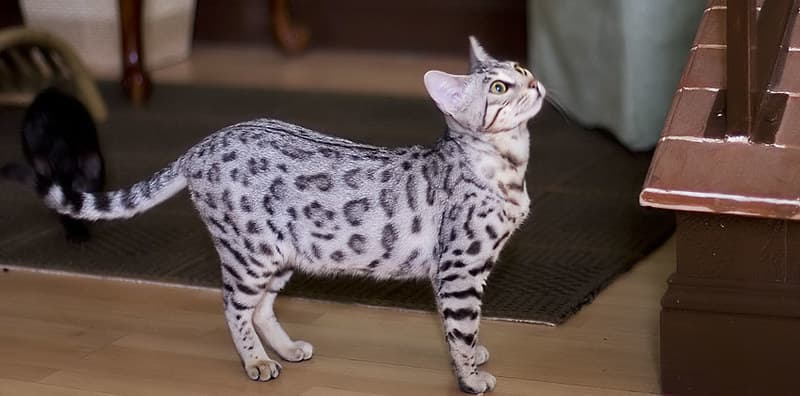Bengal

Height
Male:20,25 Female:20,25Lifespan
9-16 yearsPedigree
NoWeight
Male: 3,6-6,8 kg Female: 3,6-6,8 kgPros
- Striking appearance
- Intelligent and trainable
- Active and playful
- Affectionate and loyal (often dog-like in their attachment)
- Hypoallergenic qualities (lower shedding and dander production compared to some breeds)
- Enjoy water
- Relatively healthy breed
- Vocal and communicative
- Can be leash-trained.
Cons
- High energy
- Destructive if bored
- Vocal
- Can be demanding of attention
- Not always good with young children
- May not get along with other pets (especially smaller ones)
- Expensive
- Can be prone to certain health issues (like hypertrophic cardiomyopathy and pyruvate kinase deficiency)
- Requires a lot of playtime and interaction.
Introduction of the Bengal Cat
Bengal cats have consistently been one of the most popular choices of domestic cats and for good reason. They are renowned for the kind natures when they are around people in a family environment and can make excellent companions or family pets.
History of the Bengal Cat
The Bengal cat is a hybrid breed that was first developed in the 1960s by crossing the domestic cat with the Asian leopard cat (Prionailurus bengalensis). The goal was to create a new breed of cat that would have the wild appearance of the leopard cat but the gentle and affectionate personality of the domestic cat. The early generations of Bengals were not very successful, as they were often difficult to handle and prone to aggression. However, through careful breeding, breeders were able to develop a more stable and domesticated breed.
Today, the Bengal cat is a popular and well-established breed. They are known for their beautiful leopard-like coat, their intelligence, and their affectionate nature. Bengals are a high-energy breed, so they need plenty of exercise and attention. They are also very intelligent and can be trained to do tricks.
Interesting facts about the breed
- Are Bengal cats a vulnerable breed? No they are among the most popular companion cats in the UK
- They were originally bred to have the wild appearance of the leopard cat but the gentle and affectionate personality of the domestic cat
- The early generations of Bengals were not very successful, as they were often difficult to handle and prone to aggression
- Through careful breeding, breeders were able to develop a more stable and domesticated breed
- Bengals are a high-energy breed, so they need plenty of exercise and attention
- They are also very intelligent and can be trained to do tricks
Characteristics
Activeness
Docility
Friendliness
Grooming
Hardiness
Health
Independence
Intelligence
Need for Attention
Playfulness
Shedding
Vocality
Are you looking to buy the Bengal breed?
See current available pets or share this breed with your friends!